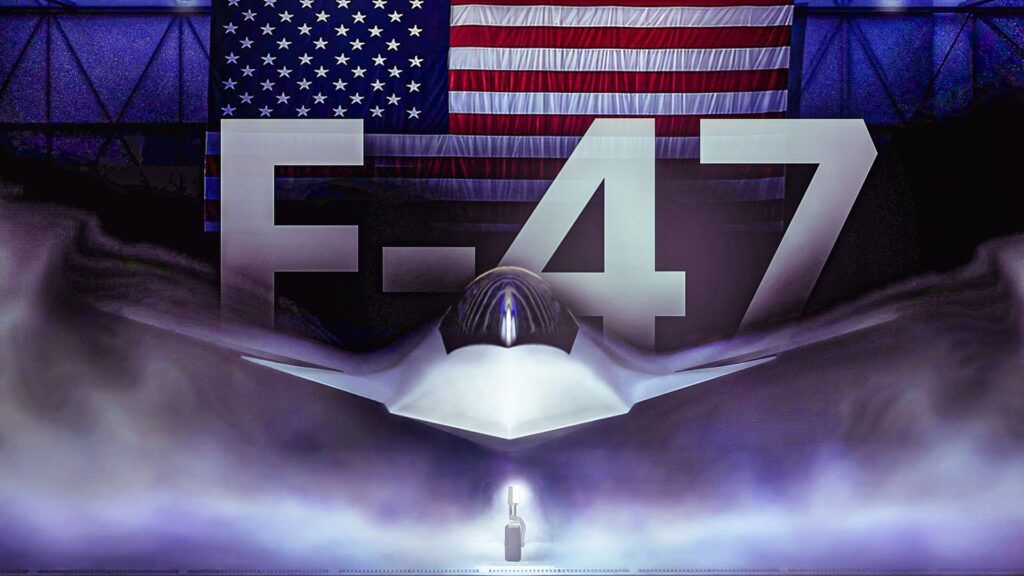
In a landmark decision, the United States Air Force announced on March 21, 2025, that it has selected Boeing to develop the next-generation air-superiority fighter, the stealthy F-47. This choice has reverberated throughout the defense and aviation sectors, given Lockheed Martin’s long-standing dominance in American stealth design, producing renowned aircraft like the F-22 Raptor and the F-35 Lightning II. The F-47 program is pivotal to the Next Generation Air Dominance (NGAD) initiative, aiming to sustain US air superiority through the 2030s and beyond.
The NGAD initiative transcends traditional aircraft development by integrating a manned fighter with a network of autonomous drones, sensors, and digital command systems. The Air Force’s decision to award this contract to Boeing signifies a strategic pivot, focusing on diversifying the defense industrial base while enhancing the operational capabilities of the US military.
Strategic Shifts and Boeing’s Advantage
When the NGAD program was unveiled, it was framed not merely as a single aircraft but as a comprehensive system, featuring a crewed fighter capable of coordinating multiple unmanned drones, known as Collaborative Combat Aircraft (CCA). This collaborative approach aims to create a “quarterback” fighter that can control an array of unmanned wingmen equipped with sensors, weapons, or jammers.
Boeing’s successful bid was bolstered by its robust digital engineering capabilities, including the creation of a full-scale digital twin of the F-47. This technology allowed for thorough analysis of the aircraft’s design, covering aspects such as radar signature and maintainability, thus minimizing risks that Lockheed’s more experimental design could not mitigate. Following the announcement, Lockheed Martin quickly pivoted, committing to upgrades for its existing F-35 fleet, asserting that it could deliver “eighty percent of F-47 capability at half the cost.”
This shift marks a significant moment for Boeing, revitalizing its defense sector amid challenges stemming from previous crises, such as the Boeing 737 MAX incidents. For the Air Force, the decision not only disrupts Lockheed’s 25-year reign but also repositions Boeing as a leader in stealth technology.
Industrial Strategy Behind the Decision
The Air Force’s choice was influenced by broader industrial and strategic factors. Pentagon officials have long expressed concerns about the concentration of fighter production within a single contractor. With Lockheed Martin responsible for both the F-22 and F-35, the Department of Defense aimed to reduce over-dependence on one supplier. By awarding the F-47 contract to Boeing, the Air Force is diversifying its defense industrial base, an essential principle highlighted in congressional oversight reports.
Boeing’s design benefits from years of exploratory testing funded by the Defense Advanced Research Projects Agency (DARPA), allowing it to leverage advanced technologies such as adaptive engines, enhanced stealth materials, and AI-driven flight controls. This background provides Boeing with a measurable advantage in readiness. As global competitors like China and Russia advance their own next-generation fighters, including China’s J-20B and Russia’s Su-57M, the urgency for rapid development has become increasingly critical. The Fiscal Year 2026 budget allocates approximately $3.5 billion for ongoing F-47 development, underscoring its status as a top priority.
The F-47 program not only secures Boeing’s foothold in defense contracting but also serves to stabilize its manufacturing operations in St. Louis and attract a new generation of engineering talent. Lockheed Martin, on the other hand, plans to focus on modernizing its F-35 aircraft to maintain its position in the export market.
Technical Specifications and Future Outlook
The F-47 is designed to deliver advanced technologies that ensure air superiority for the Joint Force. Key technical specifications include:
– **Penetration-capable stealth**: The F-47 is expected to feature improved radar-absorbent composites, adaptive intakes, and advanced sensors to integrate battlefield data across multiple domains.
– **Unmanned teaming**: It will operate in conjunction with drone wingmen, enhancing its operational reach and capabilities.
– **Range and sustainability**: With the threat of extended combat distances, the F-47 will be equipped with an adaptive-cycle engine developed by GE Aerospace and Pratt & Whitney.
– **Modularity and adaptability**: The platform will support upgrades without requiring a complete redesign, accommodating the rapid pace of technological change.
The anticipated timeline for the F-47 includes a first flight targeted for 2028 and entry into service in the early 2030s. Analysts project the total development cost may exceed $20 billion before production begins, with the majority of this work taking place at Boeing’s St. Louis facility.
Lockheed Martin’s response to losing the F-47 contract involves focusing on the F-35, positioning it as a “fifth-generation-plus” fighter that offers capabilities close to NGAD at lower costs. This strategy allows Lockheed to maintain its relevance in the international fighter market.
As the F-47 program progresses, it is set to redefine air combat strategies. Once operational, it will not only replace the F-22 for air superiority missions but also integrate with existing F-35s and drone formations. The F-47’s role will involve commanding unmanned aircraft to carry out various tactical functions, thereby changing traditional dogfighting dynamics.
In conclusion, the F-47 program is more than just a technological shift; it represents a strategic realignment within the US defense landscape. Boeing’s victory not only revitalizes its position in the fighter aircraft market but also reinforces the importance of competitive innovation in military aviation.







